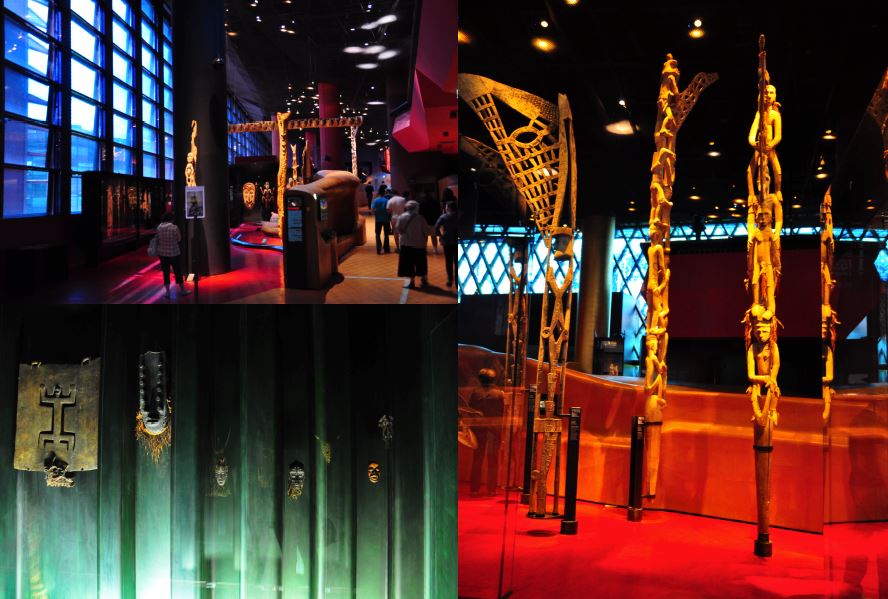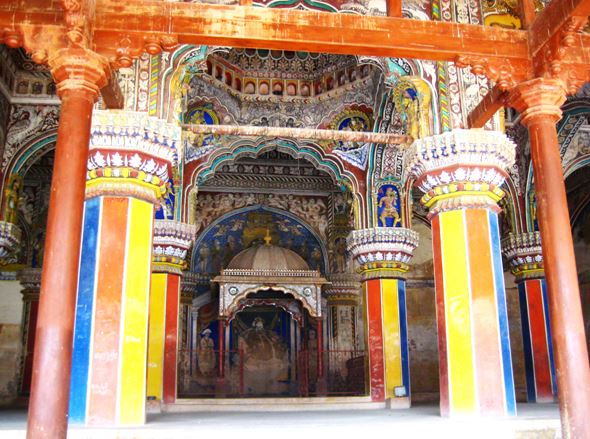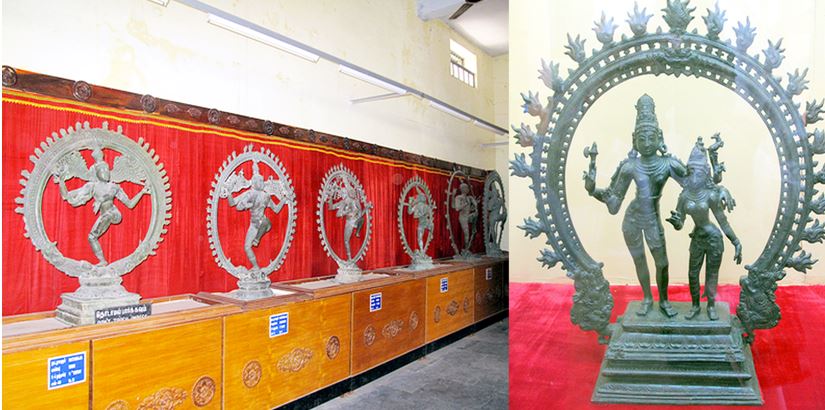Musée du Quai Branly, Paris, France | Photo by Deepthi Radhakrishnan.
In my previous post I began by trying to define a good museum exhibit. What emerged from dialogues and insights with readers was the importance of the aspect of the objects or the exhibits gaining prominence over the medium or the display itself — in other words, the need for a non-intrusive display at the museum.
This got me ruminating about a memorable museum experience, thereby becoming imperative to clarify at the very onset that ‘memorable is not equal to beautiful or appealing’. What constitutes a memorable museum experience anyway — the collection, the architecture, educative insights upon visiting a museum, or the overall experience itself? Does architecture disrupt or hinder day-to-day operations or compromise displays? What is our approach towards art in India? Are art and religion inseparable? Are art and politics inseparable? Or as Jacques Derrida observed that it was “…a divine teleology (that) secures the political economy of the fine arts.”
At least two museums from totally diverse backgrounds are contenders for my memorable museum experience position — the Thanjavur Royal Palace Museum located in Tamil Nadu, India, and the Musée du Quai Branly at Paris, France.
Tanjavur (Tanjavur), also known as Tanjore, is a bustling city with a rich historical legacy, famous for its remarkable art and architecture. It is home to the magnificent Brihadisvara Temple at Gangaikondacholisvaram and the Airavatesvara Temple at Darasuram. Tanjore is known as a temple town, dotted with numerous, ornate temples that dominate the landscape of the city — many of them a legacy of the Chola Empire.
The Thanjavur Royal Palace Museum | Photo by Deepthi Radhakrishnan.
Chola bronzes: (left) Nataraja collection; (right) Siva with his consort Parvathi | Photo by Deepthi Radhakrishnan.
Constructed by the rulers of the Thanjavur Nayak kingdom, Thanjavur Royal Palace has been adapted to become a museum that houses a varied collection of prehistoric sculptures, Tanjore paintings, Sanskrit manuscripts on palm leaves, and numismatics. Beautiful stone sculptures of the Pandya, Chola, Nayaka, and Pallava periods adorn the corridors.
The museum collection is quite remarkable, especially the beautifully intricate Chola bronzes. Equally exquisite is the royal darbar (royal court) ornate with murals and painted walls.
What then has left an indelible mark on my memory? Is it the magnificent collection of Natarajas, arranged in succession on a cabinet, with a red velvet cloth serving as backdrop? Here, the sculptures are stripped of any distracting casing and the light reflects the glass cabinet cases. One can sense the self-evident absence of conservation standards as well as a curatorial approach to display —a sort of ‘cabinet of curiosities’ approach. The Thanjavur Royal Palace museum made me realize that what is non-existent cannot be intrusive. Right?
Musée du Quai Branly: the forest | Photo by Deepthi Radhakrishnan.
The Musée du Quai Branly (MQB) opened to great fanfare in June 2006, inaugurated by President Jacques Chirac. Devoted entirely to non-Western art, the museum’s gallery space is no less impressive. Roughly 5,000 square meters has been used to display 3,500 objects, from the museum’s collection of 3 million works from Africa, Asia, Oceania, and the Americas. Located on the left bank of Seine River, it stands on the last piece of prime real estate in Central Paris, just one block from the Eiffel Tower.
When I visited the MQB, I was awed and intrigued by what I saw. The MQB was the result of societal turmoil in France from 1995 – 2005. Jacques Chirac in a rhetoric is quoted to have said, “The original idea behind MQB… stemmed from the political will to see justice rendered to non-European cultures…” “address colonialism by elevating colonial objects as ‘art’ and declare France as the harbinger of universal values of equality”.
It was then that I walked away with the knowledge and insight that the casing, in this case, the forest that is MQB, is almost theatrical in depiction. The display and presentation of the museum’s collection of non-European art dangerously borders on the sidelines.
As Karsten Schubert mentions in the Curator’s Egg, “The museum building boom of the last two decades is gradually beginning to run its course, the questions of how to work within given architectural parameters, how to utilize old and new buildings and, at the same time, present collections and individual works of art in their best light, may well dominate the museum discourse for the foreseeable future.”
With so much emphasis on museum architecture (e.g., Clore Gallery- Tate Museum, Guggenheim Museum) the issue of displays can become dangerously sidelined.
In conclusion, it would appear that the best approach forward would be either that of the Thanjavur Royal Palace museum or that of the Musée du Quai Branly. They are both memorable, yes, but neither the Royal museum nor MQB, are necessarily the appropriate choice towards displaying museum collections. The truth lies somewhere in the middle. What then is that middle ground? And who decides what is best and for whom?
About the Author
 Deepthi Radhakrishan is ReReeti’s Design & Learning Officer. She holds a degree in Design (NID, India) and master’s degree in Museum Studies (UEA, UK). She was the recipient of the prestigious Education Fellowship at the Sainsbury Center for Visual Arts (SCVA, UK). She is passionate about illustrating and designing outreach programmes for museum visitors. Get in touch with Deepthi for design and learning enquiries. She would love to hear from her readers.
Deepthi Radhakrishan is ReReeti’s Design & Learning Officer. She holds a degree in Design (NID, India) and master’s degree in Museum Studies (UEA, UK). She was the recipient of the prestigious Education Fellowship at the Sainsbury Center for Visual Arts (SCVA, UK). She is passionate about illustrating and designing outreach programmes for museum visitors. Get in touch with Deepthi for design and learning enquiries. She would love to hear from her readers.











Reblogged this on EVE and commented:
Thank you ReReeti , Tjehsvi and Deppthi to write so many good articles about museums.
Excellent effort. Museum staff in India generally do not discuss about professional aspects.
We need independent discussion groups on all aspects of museum profession.
Please keep it up.
Thank you Venugopal. It is our endeavor to provide support to museums to help them become more relevant to today’s audience. Could you list three areas/aspects which you like to get more information /discussion/capacity building workshops on?
the following aspects of Museums need basic information. Most of the works in these are resrtricted to foreign examples. Whatever in India rare mostly on Art exhibition s
1. visitor studies; the qualitative aspects of visitation to museums compared with other informal learning settings like zoos, aquaria, national parks, leisure parks etc
2. access aspects especially for differently abled people
3. museums as social institutions
Thank you very much. We will try to address these aspects in our future blogs.